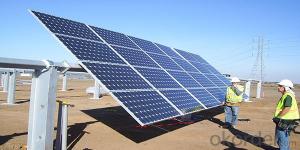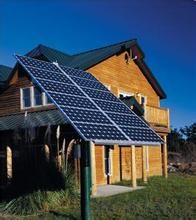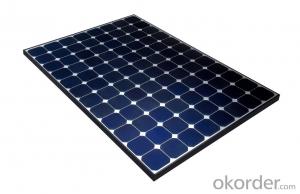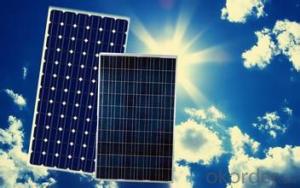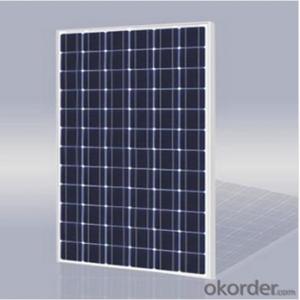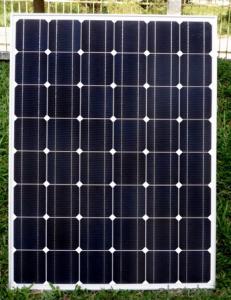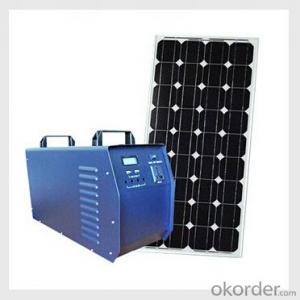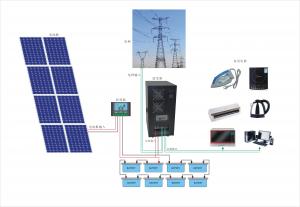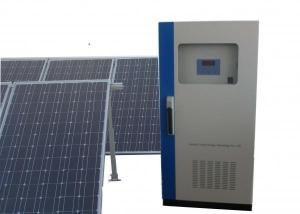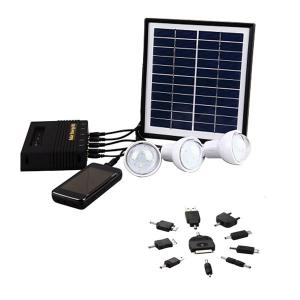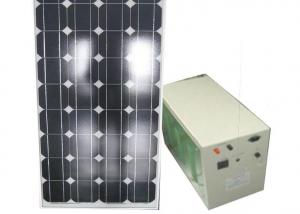116kw CNBM Monocrystalline Silicon Solar Energy Systems Home Panel
- Loading Port:
- Tianjin
- Payment Terms:
- TT OR LC
- Min Order Qty:
- 60 watt
- Supply Capability:
- 1000 watt/month
OKorder Service Pledge
OKorder Financial Service
You Might Also Like
Specification
116KW CNBM Monocrystalline Silicon Panel for Home Using
Production description
Garden Television (HGTV) network. Actress Daryl Hannahpromotes off-grid living and constructed her home in Colorado according to those principles, as does survival expert and Dual Survival co-star Cody Lundin,[3]who lives in a self-designed, passive solar earth house in the high-desert wilderness of Northern Arizona, collecting rainwater, composting waste, and paying nothing for utilities.[4][5]
The large magnitude of solar energy available makes it a highly appealing source of electricity. The United Nations Development Programme in its 2000 World Energy Assessment found that the annual potential of solar energy was 1,575–49,387 exajoules (EJ). This is several times larger than the total world energy consumption, which was 559.8 EJ in 2012.
wind, micro hydro, geothermal; with agenerator or Micro combined heat and power with adequate fuel reserves. Such a system is called a stand-alone power system. In addition, it is possible to simply eliminate electric power such as in Old Order Amish and Old Order Mennonite communities.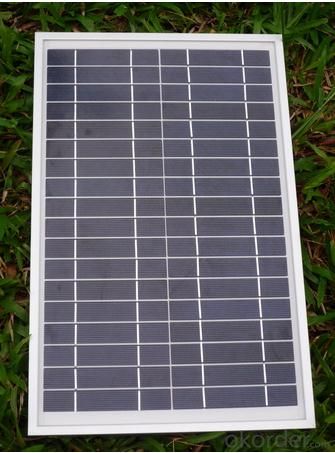
Feature
1.High conversion efficiencies resulting in superior power output performance.
2.Outstanding power output even in low light or high temperature conditions
3.Optimized design for ease of soldering and lamination
Physical characteristic
1. Rigorous quality control meets the highest international standards.
2. High-transmissivity low-iron tempered glass, strong aluminium frame.
3. Using UV-resistant silicon.
4. IS09001/14001/CE/TUV/UL
Packaging
26pcs in one carton 6pallets in 20foot container 14pallets in 40 foot container.
- Q: How do solar energy systems impact the reliability of the electricity grid?
- Solar energy systems can have both positive and negative impacts on the reliability of the electricity grid. On one hand, solar energy systems can enhance grid reliability by diversifying the energy sources and reducing reliance on traditional fossil fuel-based power plants. This can help prevent power outages and reduce the vulnerability of the grid to disruptions. Additionally, solar energy systems can contribute to the decentralization of power generation, empowering communities and reducing the risk of widespread blackouts. On the other hand, solar energy systems also pose challenges to grid reliability. Their intermittent nature, as solar power generation depends on sunlight availability, can create fluctuations in the supply of electricity. This intermittency requires the grid to be more flexible and adapt quickly to varying solar output. To ensure grid stability, additional measures such as energy storage systems and advanced grid management technologies may be necessary. Overall, the impact of solar energy systems on grid reliability depends on various factors such as the level of solar penetration, grid infrastructure, and the implementation of supportive policies and technologies. With proper planning and integration, solar energy systems can contribute to a more reliable and resilient electricity grid.
- Q: Can solar energy systems be used for powering space exploration missions?
- Yes, solar energy systems can be used for powering space exploration missions. Solar energy is a clean and renewable source of power that is abundant in space. It is already being utilized for various space missions, such as the International Space Station (ISS), Mars rovers, and satellites. Solar panels, also known as photovoltaic (PV) cells, convert sunlight into electricity. They are lightweight, compact, and can be easily integrated into the design of spacecraft. Solar panels are especially useful for missions that are close to the Sun or in space where there is ample sunlight, as they can provide a steady and reliable source of power. The ISS, for example, relies heavily on solar power. It is equipped with large solar arrays that capture sunlight and generate electricity to meet the energy demands of the crew and the various systems onboard. The Mars rovers, such as Curiosity and Perseverance, also utilize solar panels to power their operations on the red planet. Solar energy systems offer several advantages for space exploration missions. Firstly, they eliminate the need for bulky and limited fuel sources, such as batteries or radioactive materials, reducing the overall weight and cost of the mission. Secondly, solar energy systems are virtually maintenance-free, providing a long-lasting and reliable source of power. Additionally, solar power is environmentally friendly, producing no emissions or pollution during operation. However, there are some limitations to using solar energy in space exploration. For missions that venture far from the Sun or operate in areas with limited sunlight, alternative power sources like nuclear energy or fuel cells may be necessary. Moreover, solar panels are susceptible to damage from micrometeoroids, radiation, and other space debris, requiring protective measures and redundancy systems. In conclusion, solar energy systems have proven to be a viable and efficient option for powering space exploration missions. Their ability to convert sunlight into electricity, combined with their lightweight and compact design, make them an ideal choice for providing a sustainable and reliable source of power in space.
- Q: How often do solar panels need to be cleaned or maintained?
- Solar panels typically require very little maintenance. They should be cleaned at least once or twice a year to remove any dirt, debris, or dust that may accumulate on the surface. However, the frequency of cleaning may vary depending on the location and environmental factors. Regular inspection for damage or obstructions is also recommended to ensure optimal performance.
- Q: How do solar energy systems affect air pollution?
- Solar energy systems have a positive impact on air pollution as they generate clean and renewable energy without emitting harmful pollutants or greenhouse gases. By reducing the reliance on fossil fuels for electricity generation, solar energy helps to improve air quality and mitigate the negative health and environmental effects associated with air pollution.
- Q: Can solar energy systems be used for powering signs or billboards?
- Solar energy systems are definitely capable of powering signs or billboards. In fact, solar power is an excellent option for these applications due to its numerous advantages. These systems consist of solar panels that convert sunlight into electricity, which can be used to power various devices and appliances, including signs and billboards. One of the main benefits of using solar energy for signs or billboards is that it is a clean and renewable energy source. Solar power does not produce any harmful emissions or pollutants, making it an environmentally friendly choice. This is particularly important for outdoor signs and billboards located in public areas. Additionally, solar energy systems are highly reliable and require minimal maintenance. Once installed, the solar panels can generate electricity for many years with very little upkeep. This makes solar power perfect for signs or billboards that need to operate continuously or for extended periods without interruption. Moreover, solar energy systems can be installed in various sizes and configurations, providing flexibility in design and placement of signs or billboards. Solar panels can be mounted on rooftops, poles, or even integrated into the sign design itself. This versatility makes solar power suitable for both new installations and retrofitting existing signs or billboards with solar panels. From an economic perspective, solar energy can also result in long-term cost savings. While the initial installation costs may be higher compared to traditional electrical connections, solar power eliminates the need for ongoing electricity bills. Once the system is in place, the energy generated by the solar panels is essentially free, leading to significant savings over time. In conclusion, solar energy systems can certainly be used to power signs or billboards. The clean and renewable nature of solar power, along with its reliability, low maintenance requirements, and design flexibility, make it a highly suitable and sustainable choice for these applications.
- Q: Can solar energy systems be installed on floating structures?
- Yes, solar energy systems can be installed on floating structures. Floating solar panels, also known as floating photovoltaic (FPV) systems, are becoming increasingly popular as a sustainable solution for harnessing solar energy. These systems can be installed on various floating structures like reservoirs, lakes, and even oceans. They offer several advantages such as increased energy production due to the cooling effect of water, reduced land use, and the potential to utilize underutilized water bodies for renewable energy generation.
- Q: Can solar energy systems be installed on roofs?
- Yes, solar energy systems can be installed on roofs. In fact, rooftops are one of the most common locations for installing solar panels. The main advantage of installing solar panels on roofs is that they utilize the existing space without requiring any additional land. Rooftop solar installations are also advantageous because they are usually unobstructed by shading from trees or buildings, resulting in optimal sun exposure for generating electricity. Additionally, rooftop installations are often cost-effective as they can reduce the need for long-distance transmission lines and can directly supply power to the building they are installed on. Overall, installing solar energy systems on roofs is a practical and efficient way to harness clean and renewable energy.
- Q: How do solar energy systems perform in different weather conditions?
- Solar energy systems can still generate electricity on cloudy or rainy days, although their performance may be reduced compared to sunny days. However, extreme weather conditions such as heavy snow or hail can have a more significant impact on their efficiency. Overall, solar energy systems are designed to perform well in various weather conditions, but their output may vary depending on the level of sunshine available.
- Q: Can solar energy systems be installed in areas with heavy snowfall?
- Solar energy systems can indeed be installed in areas that experience heavy snowfall. However, it is crucial to consider the snow's effect on system performance and take necessary precautions during installation. Snow can temporarily decrease the amount of sunlight reaching the solar panels, thus reducing energy production. Nevertheless, the panels are designed with a tilt and smooth surface, enabling snow to easily slide off. Furthermore, technological advancements have resulted in the creation of snow-resistant solar panels that are highly efficient at converting sunlight into electricity even in snowy conditions. It is also worth mentioning that solar panels are often angled for optimal exposure to the sun, thereby minimizing snow buildup. Ultimately, while heavy snowfall may impact the efficiency of solar energy systems, they can still be effectively installed and contribute to renewable energy generation in areas with such weather conditions.
- Q: Can solar energy systems be used in areas with limited access to skilled labor?
- Yes, solar energy systems can be used in areas with limited access to skilled labor. Solar panels are designed to be simple and easy to install, requiring minimal maintenance and technical expertise. Moreover, advancements in technology have led to the availability of plug-and-play solar kits that can be easily installed by anyone, even with limited technical skills. Additionally, there are various training programs and initiatives aimed at educating local communities on solar installation and maintenance, empowering them to adopt and benefit from solar energy systems.
Send your message to us
116kw CNBM Monocrystalline Silicon Solar Energy Systems Home Panel
- Loading Port:
- Tianjin
- Payment Terms:
- TT OR LC
- Min Order Qty:
- 60 watt
- Supply Capability:
- 1000 watt/month
OKorder Service Pledge
OKorder Financial Service
Similar products
Hot products
Hot Searches
Related keywords
